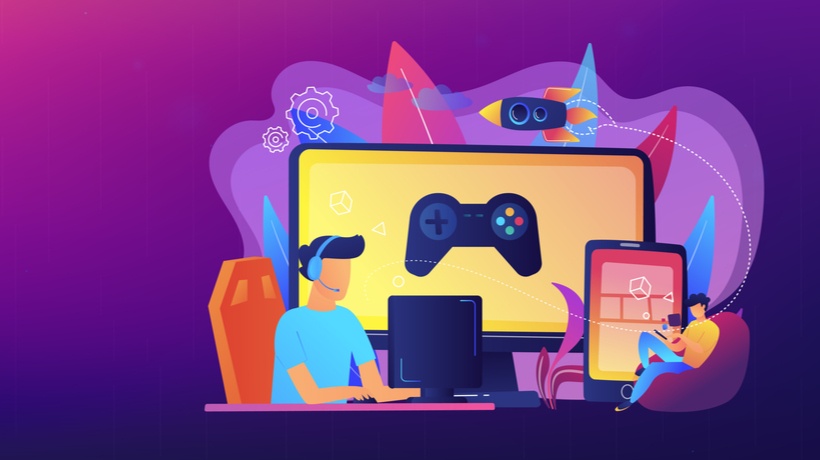Rethink Traditional Training Strategies
A lot has changed during the pandemic. Businesses had to pivot and adapt operations to keep employees and customers safe. As a result, an unprecedented number of people are now working remotely. As organizations navigate these uncharted waters and adjust to an increasingly remote workforce, L&D departments search for new ways to train their distributed employees. While there are many remote training options, a game-based microlearning approach is a natural fit for at-home employees because it:
- Seamlessly fits into their distraction-filled workday.
- Provides an engaging learning experience that promotes social learning.
- Yields granular data and analytics to help analyze and judge efficacy.
Self-Paced Learning
The way people work at home is different than in the office, and they face a unique set of distractions. Kids, housework, pets, and spotty WiFi all interrupt the workday and change how (and when) tasks get done. This makes scheduling group, day-long virtual training for remote staff nearly impossible.
For remote training to be effective, it needs to be self-paced and available on-demand, so employees can learn when convenient. This is why microlearning is such an effective method for distributed teams. Microlearning utilizes online learning modules that can be accessed anytime, from any device. Since it requires a minimum time commitment, an employee can log in, focus on one hyper-specific topic, gain insights, and be done. They can move on with their day, incorporating what they just learned into their workflow.
When training is broken up into small, digestible chunks, each lesson can be completed in minutes—not hours. Any free time slot, whether it’s the five minutes before a meeting or the last 10 minutes of a day, can be turned into meaningful training time.
Engaging And Social Training
Games are inherently interactive, making it the perfect training method to engage remote employees. In game-based training, learners are constantly challenged, asked for input, and receive feedback. This training loop leads to higher individual participation and engagement rates and can help improve knowledge retention.
Another benefit of game-based training is its social aspect. One of the main complaints from remote workers is that they feel isolated. Being away from the office and separated from colleagues creates a disconnect within the team. Game-based training can help bridge that isolation gap and create a space to foster community and collaboration. When training through a game, people can either work together to solve challenges or compete with one another (or another department) to be at the top of a leaderboard.
By making training interactive and collaborative, learning can actually be viewed as a break from work and a chance to connect with coworkers and colleagues.
Precision Analytics
Comprehensive reporting and analytic tools are essential when training remote staff. It’s hard to determine how well employees grasp concepts, where the knowledge gaps are, or who your training superstars and slackers are if you’re just relying on data like who attended training and if they passed or failed a quiz.
To help your organization refine training and ensure employees are actually learning, you need access to raw data like when (and how often) employees log in, what courses they complete, which modules they repeat, and how long they spend on different lessons. Sorting that data into clear dashboards can help trainers and L&D professionals evaluate and refine training.
Game-based microlearning platforms use industry-leading technology, and many have advanced analytics baked into the system. Every part of the training is measurable, and insights about content effectiveness, skill gaps, and comprehension are available in real-time. Detailed analytics and comprehensive data allow trainers to quickly assess lessons and course-correct instruction when needed to ensure training is useful for all employees.
As organizations assess their operations and processes due to the pandemic, it’s also a good time to rethink and reevaluate training methods. Remote working will be the new normal, and organizations need to adopt a training strategy that accommodates their distributed workforce.
Traditional training methods with static learning experiences will not engage or educate, and they don’t provide the detailed data needed to evaluate effectiveness. At the very least, remote training needs to be on-demand and available 24/7, provide an immersive learning experience, and have detailed analytics so trainers can assess and adjust lessons as needed.






![Your Microlearning Journey Roadmap: How To Launch A Microlearning Game-Based Strategy That Gets Rapid Results [eBook]](https://cdn.elearningindustry.com/wp-content/uploads/2021/10/shutterstock_1920798950.jpg)

